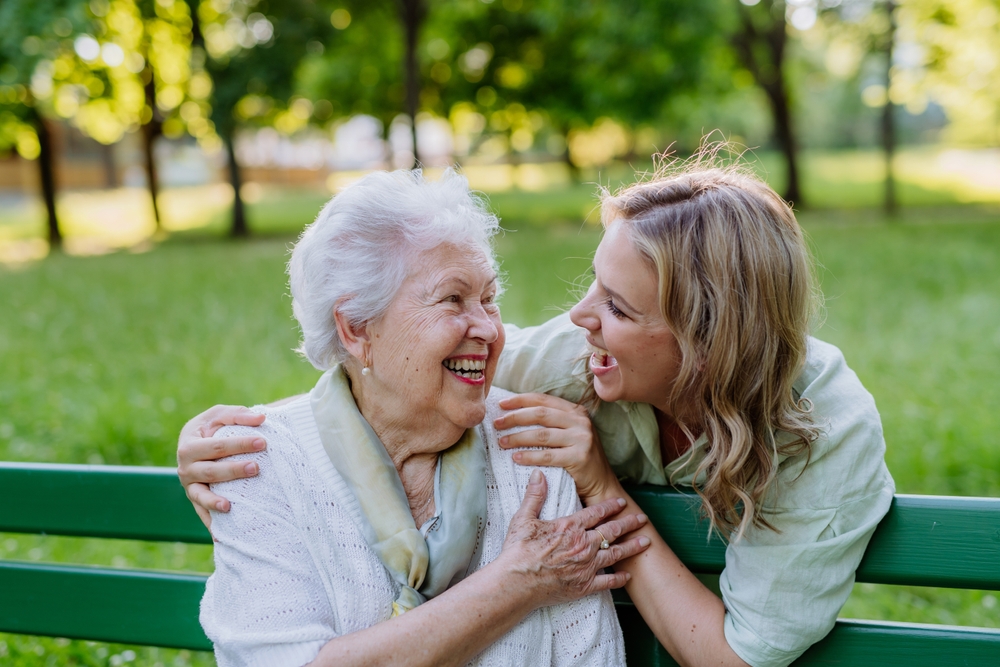For caregivers, managing the middle stage of Parkinson’s means navigating more frequent difficulties. From physical mobility issues to communication problems and emotional strain, caregivers require more attention, understanding, and resilience and the symptoms become more pronounced. This guide offers compassionate advice to help caregivers provide the best care possible while maintaining their own well-being.
Understanding the Middle Stages of Parkinson’s
Parkinson’s disease is a progressive neurological disorder that affects movement, speech, and cognitive functions.
In the middle stage of Parkinson’s disease, symptoms that may have been subtle in the early stages become more apparent:
Motor Function Decline
Increased mobility challenges like walking or fine motor tasks.
Rigidity and Tremors
Muscles become stiffer and unc
ontrollable shaking worsens.
Speech Issues
Speech becomes more slurred and quieter.
Cognitive Changes
Memory problems, confusion, and difficulty with concentration may develop.
These changes significantly impact daily activities, as patients may become more dependent on caregivers for assistance with personal care and mobility. It is a delicate time, as caregivers are not only providing physical care but also emotional support to help patients navigate their new limitations.
Key Challenges for Caregivers
Caring for someone in the middle stages of Parkinson’s can take both an emotional and physical toll. Some of the most common challenges caregivers face include:
Mobility Issues
As motor symptoms worsen, helping with basic activities like walking, bathing, or dressing can become p
hysically demanding for caregivers.
Increased Dependency
Patients often need more help with daily activities, which may lead caregivers to feel overwhelmed by the responsibility.
Managing Medications

Keeping track of medications and adjusting dosages to manage symptoms or side effects can be complicated and stressful.
Communication Difficulties
Speech and cognitive issues can make it hard for patients to express themselves, leading to frustration and miscommunication for both parties.
Caregivers must balance these physical and emotional demands while ensuring the safety and well-being of their loved ones.
Tips for Caring for a Loved One with Middle-Stage Parkinson’s
1. Managing Symptoms
Physical Therapy & Exercise
Encourage regular physical therapy sessions to help improve motor function, reduce stiffness, and prevent further decline. Gentle exercises like stretching or walking can also improve muscle flexibility and mobility.
Assistive Devices
Using devices like canes, walkers, or grab bars can enhance mobility and reduce the risk of falls. These tools are invaluable for both patient safety and easing the caregiver’s physical burden.
2. Safety at Home
-
Fall Prevention
Modify the home environment by removing clutter, installing grab bars in key areas like the bathroom, using non-slip mats, and ensuring good lighting throughout the home, to reduce the risk of falls.
-
Clear Pathways
Keep frequently used areas free from obstacles, and consider rearranging furniture to create open walking spaces for easier mobility.
3. Medication Management
-
Tracking Medications
Parkinson’s medications often need to be taken at specific times to manage symptoms effectively. Use pill organizers or set alarms to ensure medications are administered correctly and consistently.
-
Managing Side Effects
Be aware of common side effects from Parkinson’s medications, such as nausea or dizziness, and consult with healthcare providers on how to minimize them.
4. Daily Care & Routine
-
Establish Routines
A structured daily routine can make caregiving easier and less stressful for both patient and caregiver. Regular meal times, exercise, and medication schedules can provide predictability and help manage symptoms.
-
Adapt Daily Tasks
Simplify tasks where possible, such as using clothing that is easy to put on or breaking up activities into smaller, manageable steps.
5. Communication Strategies
-
Use Short, Simple Sentences
As cognitive changes affect understanding and speech, simplify conversations by using clear, short sentences. Be patient and give your loved one time to respond.
-
Incorporate Non-Verbal Cues
Body language, facial expressions, and visual aids can help when verbal communication becomes difficult.
Emotional Support for Caregivers and Patients
Caring for someone with Parkinson’s, especially in the middle stage, can be emotionally exhausting. It’s essential for both caregivers and patients to have adequate emotional support.
Caregiver Burnout
The emotional strain of caregiving can lead to burnout. It’s vital to recognize when you need a break or emotional support.
Support Groups
Look for Parkinson’s support groups in your area or online. Connecting with others who understand the challenges can offer emotional relief and practical advice.
Maintain Relationships
The caregiver-patient relationship can be tested during this time. Engage in positive, shared activities, like listening to music or reading, to foster connection.
When to Consider Professional Help or Home Health Care
If your loved one’s needs surpass your ability to provide care or if your own health is suffering, it may be time to consider additional support. Signs may include severe mobility issues, frequent falls, or complex medical needs. Home healthcare agencies like Americare specialize in helping families care for their loved ones with Parkinson’s, providing quality assistance and respite for caregivers.
Americare Can Help
When you’re caring for a loved one with middle-stage Parkinson’s disease, understanding the symptoms, knowing how to manage daily tasks, and finding emotional support is key to maintaining a good quality of life for both you and your patient.
Remember, you don’t have to do it alone. Every day, Americare helps individuals living in New York and their caregivers get the home healthcare services they need. We’re here to support you and your patient in the best possible way.
Reach out to us at Americare for more information about how to care for an individual with Parkinson’s disease and what services are available.

